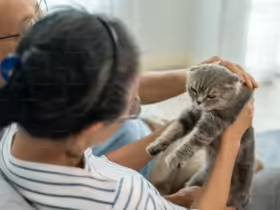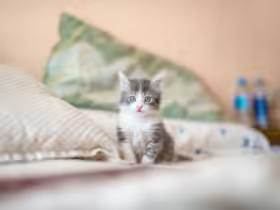Benadryl for Cats: How to Use It Safely
Benadryl, the common over-the-counter antihistamine used for humans, is sometimes recommended for cats to manage allergic reactions, itching, or anxiety. However, administering Benadryl to cats requires careful consideration to ensure it is done safely and effectively. This guide will provide detailed information on the use of Benadryl for cats, including its benefits, risks, dosage guidelines, and alternative treatments.
What is Benadryl?
Benadryl is the brand name for diphenhydramine, an antihistamine commonly used to treat allergy symptoms in humans, such as sneezing, itching, and runny nose. It works by blocking histamine, a chemical in the body that is involved in allergic reactions. Benadryl can also have sedative effects, which may be helpful in calming anxious pets.
When is Benadryl Used for Cats?
1. Allergic Reactions
Benadryl is often used to treat allergic reactions in cats. These reactions can be caused by various allergens, including:
- Environmental Allergens: Pollen, dust, mold, or chemicals.
- Food Allergies: Specific ingredients in their diet.
- Insect Bites/Stings: Fleas, mosquitoes, or other insects.
2. Itching and Skin Irritations
Cats experiencing itching or skin irritations due to allergies, insect bites, or other irritants might benefit from Benadryl to reduce discomfort and prevent excessive scratching.
3. Travel Anxiety
The sedative properties of Benadryl can sometimes help calm cats during stressful situations such as car rides or visits to the veterinarian.
Risks and Considerations
1. Dosage Accuracy
Accurate dosing is crucial. Cats are much smaller than humans, and improper dosing can lead to serious side effects or toxicity.
2. Side Effects
Possible side effects of Benadryl in cats include:
- Drowsiness: Benadryl can cause sedation or lethargy.
- Dry Mouth: Cats may experience dry mouth or throat.
- Urinary Retention: Difficulty urinating can occur.
- Gastrointestinal Upset: Vomiting or diarrhea might be a concern.
3. Underlying Health Conditions
Benadryl may not be suitable for cats with certain health conditions, such as:
- Glaucoma: Can worsen symptoms.
- Liver or Kidney Disease: May affect metabolism and excretion of the drug.
- Pregnancy or Nursing: Should be avoided unless prescribed by a vet.
4. Drug Interactions
Benadryl can interact with other medications your cat might be taking. Always inform your vet about any other treatments or medications your cat is on.
How to Use Benadryl Safely for Cats
1. Consult Your Veterinarian
Before giving Benadryl to your cat, consult your veterinarian. They will provide guidance on whether it is appropriate and recommend the correct dosage based on your cat’s weight, health status, and specific needs.
2. Determine the Correct Dosage
The typical dosage of Benadryl for cats is about 1 mg per pound of body weight, administered 2-3 times a day. However, this can vary, so it’s essential to follow your vet’s specific recommendations.
3. Choose the Right Form
Benadryl comes in various forms, including:
- Tablets: Standard form, but must be crushed or split for accurate dosing in cats.
- Liquid: Can be easier to administer, but be cautious of alcohol or sugar content.
- Capsules: May be harder to administer and require opening and dosing carefully.
4. Administering Benadryl
- Tablets: Crush the tablet and mix it with a small amount of your cat’s favorite food or treat to make it more palatable.
- Liquid: Use a syringe to measure the correct dose and administer it directly into your cat’s mouth or mix it with food.
- Capsules: Open the capsule and mix the powder with food or a treat.
5. Monitor for Side Effects
After administering Benadryl, observe your cat for any adverse reactions or side effects. If you notice any concerning symptoms, contact your veterinarian immediately.
6. Avoid Overuse
Benadryl should not be used long-term without veterinary supervision. Overuse or prolonged use can lead to adverse effects and complications.
Alternative Treatments for Allergies and Anxiety
1. Allergy Management
- Dietary Changes: If food allergies are suspected, consider a hypoallergenic diet or elimination diet under veterinary guidance.
- Environmental Controls: Reduce exposure to known allergens by cleaning your cat’s environment and using air purifiers.
2. Skin Irritations
- Topical Treatments: Use vet-recommended topical ointments or shampoos for skin conditions and itching.
- Flea Control: Ensure your cat is on an effective flea prevention program to manage and prevent flea allergies.
3. Anxiety Management
- Behavioral Modifications: Implement calming strategies, such as providing a safe, quiet space during stressful events.
- Pheromone Diffusers: Products like Feliway can help reduce anxiety by emitting calming pheromones.
- Prescription Medications: Consult your vet for alternative medications specifically designed for feline anxiety.











Leave a Reply